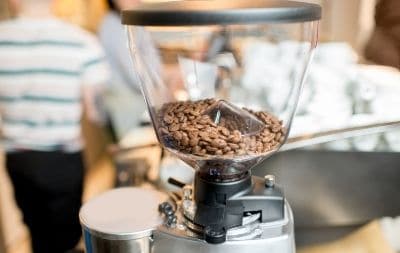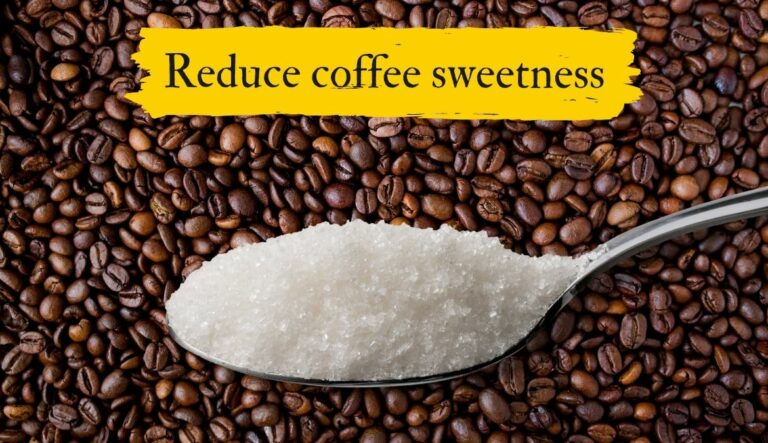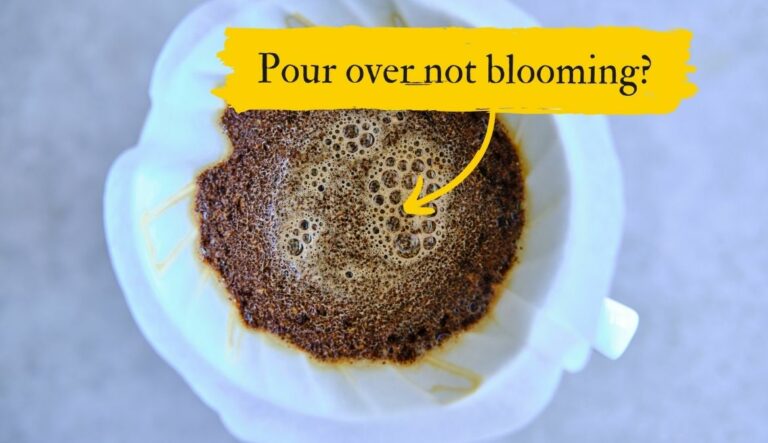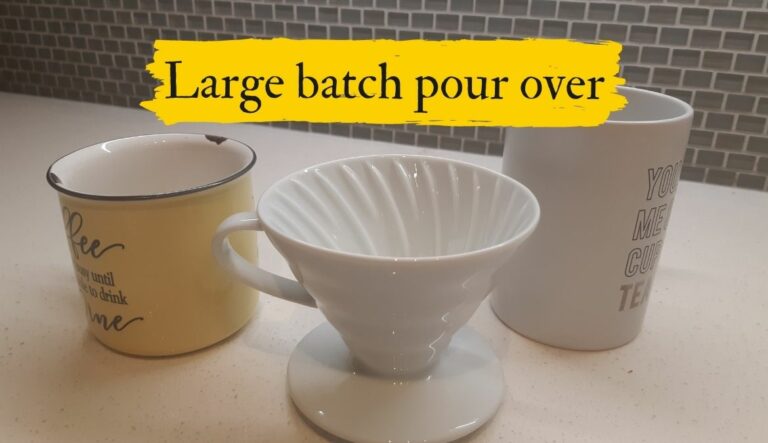You can absolutely use espresso beans when brewing pour over coffee. These beans are designed for a more balanced espresso shot, but are perfectly suitable for other coffee making methods. It’s best to buy whole bean espresso coffee though so you can grind it to an appropriate pour over grind size.
This article will shed some light on what espresso beans are and when you should consider using them with your pour over coffee maker.
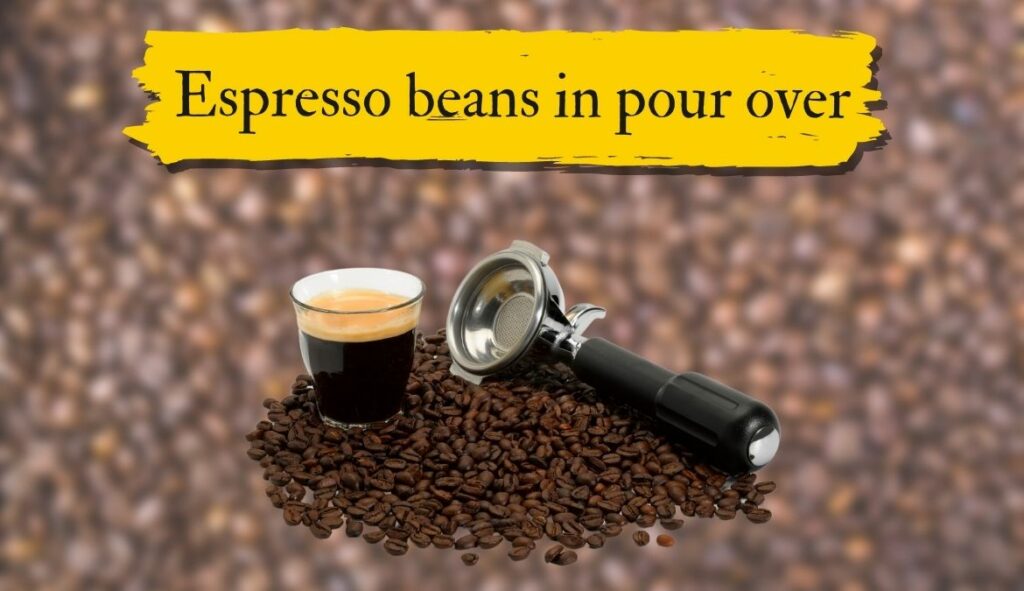
Can you use pre-ground espresso beans for pour over coffee?
It’s best to use whole bean espresso coffee for pour overs so you can grind them to an appropriate grind size. Pre-ground espresso coffee is intended for espresso machines and will be too fine. This will cause the coffee to over-extract and taste bitter and astringent in a pour over.
What does pour over coffee taste like with espresso beans?
Espresso beans will usually make your coffee taste more roasted, chocolatey and baked. These types of flavors and aromas are more distinguishable in darker roasted coffee, which espresso beans usually are.
For some people, espresso beans may produce an overly strong taste that might not be the most appealing. Others may actually enjoy espresso beans more because of this.
Darker roasts also tend to overpower some of the more subtle floral and fruity notes that are more common in lighter roasted coffee.
What does pour over coffee taste like with regular beans?
Regular coffee beans are often a blend of different countries and are medium roasted. A pour over with regular coffee will taste similar to espresso beans, but with less intense roasted flavors. You will likely be able to pick up on some of the fruit flavors that the beans take on from their origin countries.
What does pour over coffee taste like with single origin beans?
Pour overs will bring out the subtle and nuanced flavors that can be found in many single origin coffee beans. Single origin beans often have a lighter roast and have more prominent fruit and floral flavors and aromas.
These are considered specialty or third-wave coffee and often taste very unique from one another.
Is espresso a bean or a grind?
Espresso beans and espresso grinds are two different things. Espresso beans are a mix of beans from different countries and usually have a slightly darker roast. An espresso grind is a very fine grind size that has a large surface area, which allows espresso machines to extract coffee more quickly.
What’s the difference between espresso beans and regular beans?
Espresso beans almost always contain a mix of beans from different countries, while regular coffee beans are sometimes sourced from individual countries or farms. Espresso beans also tend to have a dark roast and are ground more finely to allow for more rapid extraction.
Why do espresso beans blend different countries?
Espresso shots exaggerate the flavors inside coffee beans because they extract more quickly and are brewed under much higher pressure than regular coffee. These flavors may not taste very good if the coffee is not balanced.
Coffee beans contain varying levels of lipids and acids that cause them to taste different from one another. The climate, altitude, rainfall and other factors affect how coffee tastes. For example, coffee beans are more dense and flavorful when it’s grown at a higher altitude.
In other words, coffee grown from a single country might have more prominent fruity flavors or more acidity. These flavors might taste overpowering when prepared with an espresso machine.
But when these beans are blended, or mixed, with complimentary coffee beans from other countries, the resulting shot tastes more pleasant and balanced.
How do you grind espresso beans for pour over coffee?
Espresso beans should be ground to a medium grind size for pour over coffee. This is about the same size as a grain of table salt. You can optimize your pour over grind size based on if it tastes sour or bitter, or how long the brew takes.
If it tastes sour or watery then it’s likely under extracted and requires a finer grind size. If it tastes bitter then it’s likely over extracted and requires a more coarse grind size.
We find that a 3:20-3:40 brew duration is the sweet spot for brewing tasty our over coffee. If your brew duration is less than 3:20 then consider a finer grind to prolong the brew duration. Use a coarser grind if it takes longer than 3:40 to brew.
Which coffee beans are best for pour over?
The best beans for pour over coffee are the beans that you enjoy most. An espresso blend may appeal to people who enjoy the dark roast and balanced flavor profile. A blended medium roast is best for people who enjoy some roasted flavors, but with a more prominent fruit flavor.
Light roasted single origin beans are best for more experimental coffee drinkers who like fruity and floral flavors more than the highly roasted ones.
Are espresso beans stronger than coffee beans?
Espresso beans have slightly less caffeine than normal coffee because they are darker roasts. This dark roast may also give the perception of stronger coffee because the roasted flavors and aromas are often more potent than the flavors that are added by the soil and climate.
Otherwise, espresso beans will produce a similar strength of coffee.
Can you make espresso shots in a pour over?
You cannot make espresso shots in a pour over like you can with an espresso machine. Espresso machines force water through a compact coffee bed at 9 times atmospheric pressure. This method causes the espresso shot to have a fuller body and crema. Pour over coffee uses gravity and cannot produce the same effect.

